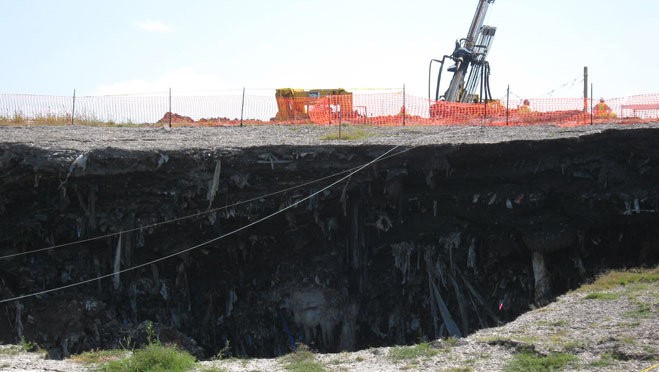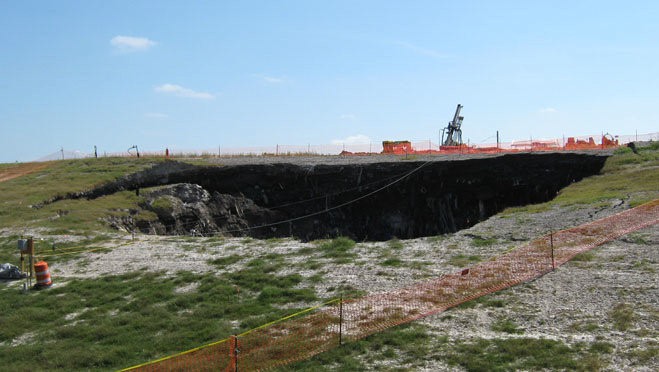
No one was injured and it is believed the dirt collapse was caused by the process that is aimed at filling the hole that is now estimated to be about 60 feet deep.
"We anticipated some movement, some additional sloughing of sidewall as a result of the pressure grouting," said Richard Siemering with HDR Engineering, which works with the Hillsborough County Solid Waste Department. He said the collapse delayed the process only a couple of hours until assessments could be made.
The grout is forced into the ground to shore up the bottom of the hole, he said, and it exerts pressure in all directions, including up. That can cause the bottom of the hole to shift and that's what caused the sides to fall in.
It's not unusual for this to happen, he said, and it could happen again.
So far, nine shafts have been drilled into the ground, aiming at below the bottom of the hole. In each shaft, 30 cubic yards of grout is pumped. In all, 270 cubic yards - about 27 cement trucks full - will be deposited around the site.
Michelle Van Dyke, spokeswoman for the county solid waste department, said engineering crews have been out there for two weeks conducting the first phase of remediation. That involves drilling diagonal shafts that reach under the bottom of the sinkhole and pumping grout there to stabilize the hole.
But what exactly is beneath the dirt and debris that forms the "plug" at the bottom is unknown, she said. In any event, the stabilization process may have caused the sides to fall in, leaving vertical walls inside the crater.
"We don't know what the cavity underneath looks like," she said. "That's why we are doing these initial stabilizations. Before we can fix this permanently, we have to understand it."
Daily measurements were made, but after the wall collapsed, those will be postponed, according to a daily update issued by the Florida Department of Environmental Protection, which also is monitoring the sinkhole and efforts to fix it.
The sinkhole is in an older part of the 3,300-acre tract at 1596 County Road 672, which opened as a landfill in 1984 amid some opposition by people who lived in the area. The area where the cavern opened up contains a mix of municipal solid waste and ash from the county's resource recovery facility.
The landfill takes up 179 acres of the tract and is built over a clay residue from a phosphate mining operation that was on the property prior to the landfill, according to the county's website
Solid waste officials don't think the crater poses any threat to the aquifer.
Beneath the hole is a 5- to 6-foot layer of clay and the aquifer at that location is 100 feet down, they said.




So too do the wild disturbances in nature, from extreme weather to the awakening of volcanoes to the fomentation of new diseases. dead fish, dead birds, Nature is responding to mankind recklessness.